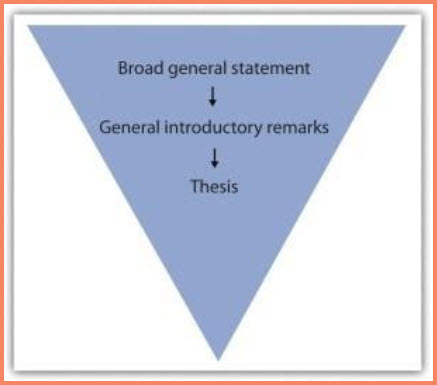17 Writing Introductory Paragraphs
Learning Objectives
- Recognize the importance of strong introductory paragraphs.
- Learn to engage the reader immediately with the introductory paragraph.
Picture your introduction as a storefront window: You have a certain amount of space to attract your customers (readers) to your goods (subject) and bring them inside your store (discussion). Once you have enticed them with something intriguing, you then point them in a specific direction and try to make the sale (convince them to accept your thesis).
Your introduction is an invitation to your readers to consider what you have to say and then to follow your train of thought as you expand upon your thesis statement.
An introduction serves the following purposes:
- Establishes your voice and tone, or your attitude, toward the subject
- Introduces the general topic of the essay
- States the thesis that will be supported in the body paragraphs
First impressions are crucial and can leave lasting effects in your reader’s mind, which is why the introduction is so important to your essay. If your introductory paragraph is dull or disjointed, your reader probably will not have much interest in continuing with the essay.
Attracting Interest in Your Introductory Paragraph
Your introduction should begin with an engaging statement devised to provoke your readers’ interest. In the next few sentences, introduce them to your topic by stating general facts or ideas about the subject. As you move deeper into your introduction, you gradually narrow the focus, moving closer to your thesis. Moving smoothly and logically from your introductory remarks to your thesis statement can be achieved using a funnel technique, as illustrated in the diagram in the figure below “Funnel Technique”.

The Funnel Technique, or General to Specific, is a very common introductory technique. Other good introductory “lead-in” techniques are the following: the use of a question (that is answered in the thesis); the use of a dictionary definition; an anecdote (short personal story), background information (the “back story” that give explanation of why you are writing on this topic), a striking fact or statistic.
Tip
Make sure your essay is balanced by not having an excessively long or short introduction or conclusion. Check that they match each other in length as closely as possible, and try to mirror the formula you used in each. Parallelism strengthens the message of your essay.
Key Takeaways
- A strong opening captures your readers’ interest and introduces them to your topic before you present your thesis statement.
- An introduction should restate your thesis, review your main points, and emphasize the importance of the topic.
- The funnel technique to writing the introduction begins with generalities and gradually narrows your focus until you present your thesis.
- A good introduction engages people’s emotions or logic, questions or explains the subject, or provides a striking image or quotation.
- Carefully chosen diction in both the introduction prevents any confusing or boring ideas.

